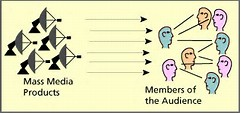This is feedback from our classmates and teacher after they watched our animatic.
Firstly our teachers feedback. The first bit of feedback was that our diagetic sound was good and therefore wot have to be changed. The next was that we had to cut down on the loneliness, as it appears to be the subject of the film, however it isn't as extremism is, we will cut down the classroom scene to 1 minute maximum to tone down the loneliness. Next was the suggestion of changing the music throughout as only two soundtracks were used, however there should be more changes. Also the findabuddy.com website appeared comical to the audience and isn't how it was supposed to be portrayed, therefore must be changed. Finally the message of the film wasn't even shown until 5 minutes in and therefore should be drip fed throughout the entire film.
Within the class feedback we found out that: the audience understood that Harry was lonely and was bullied as well as found comfort online. One thing that wasn't clear however was the extremism as it wasn't drip fed. It was also recommended that more of the conversation between Harry and the extremist is shown. We were also told that we had a wide variety of shots although tracking shots could be used as well. Our non-diagetic sound wasn't good as there was no variation between shots and movements. Also the music used was very boring after a while as it didn't change, therefore additional tracks should be used. It was also recommended that some dialogue between the bullies and Harry is exchanged as the non-diagetic ringing occurs.
Overall
Positives:
- Easily identifiable genre
- Good portrayal of isolation
- Good range of shots
Negatives:
- Not a clear narrative
- Poor non-diagetic sound
- Poor music use
- Too long of a classroom scene
- Dialogue
- Unrealistic website name
- Not enough interaction with extremist
Considering these details we will go back to our storyboard and alter some aspects and well as keep some that worked well. There are elements that don't need to be changed, however there are elements which need to be extracted, and some elements that need additions. Over the coming days these aspects that we had feedback on will be altered.




















































